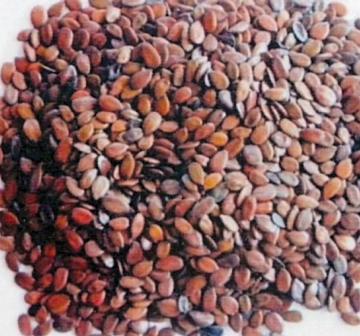
Subabul seeds (Leucaena leucocephala)
Common names: Wild tamarind, White babool, Lead tree, Ipil-Ipil, White popinac, Koa haole, Shack shack
Local names: Hindi: Safed babool Bengali: Subabul
Subabul is cultivated widely in the tropics as a fodder plant, especially on dry waste lands. It produces white flowers tinged with yellow resembling mimosa and long flattened pods. Subabul (kubabul) trees are grown all over India. Subabul leaves are fed to animals as green fodder.
Nutritive value
Subabul seeds contain 65% TDN and 29% CP. Thus it is a good source of energy and protein.
Deleterious factor
Subabul seeds contain toxic principle ‘Mimosine’ (a glucoside) which has adverse effect on growth, reproduction and health of animals. Mimosine may cause loss of hairs in young cattle. So it should be used as per recommended levels.
Detoxification
The addition of iron salts decreases mimosin toxicity, and if the treated material is allowed to stand for a week before being mixed with feeds, little toxicity remains (FAO, AFRIS). The mimosine content can also be reduced by soaking the seeds in water and drying.
Inclusion
When subabul seeds are used in feed, it is advisable to add iron and iodine containing mineral mixture. Subabul as green fodder should not be used more than 33% of total ration. Subabul seeds can be safely used up to 10 and 30% level in concentrate mixture for lactating and growing animals, respectively. They can be used up to 30% level in the ration of adult bullocks (Talpada et al., 2002).
